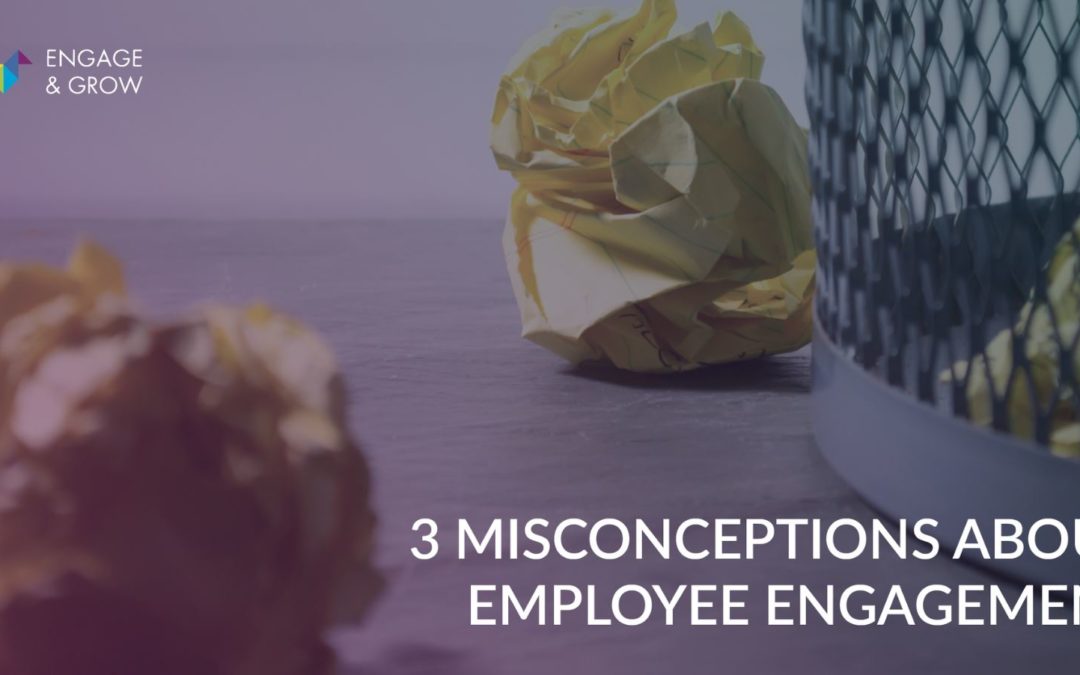
by Julia Felton | Dec 5, 2019
The term wake is a boating term that refers “to the trail of disturbed water that is left as a boat moves in the water.” It can be seen from some distance away, and the size of the wake is typically determined by the speed and the size of the boat. Whatever the magnitude of the wake, the one thing that is certain is that a wake is created. A boat simply cannot move without disturbing the water around it. It’s a physical impossibility.
What Is A Leadership Wake?
In much the same way as a boat leaves a trail behind it, so does a leader. This is all due to the law of cause and effect. Whenever a leader, or anyone else for that matter, enters into a relationship with someone else, they leave an impact (a wake). Whether this is positive or negative typically depends on the interaction, and also the self-awareness of the leader—and most leaders I know have no recognition of the type of wake they create.
Kip Tindell, cofounder, chairman, and former CEO for The Container Store, notes that:
“Someone who’s very mindful of their wake and has the mature and sobering understanding of how powerful [his or her] wake is . . . the kind of person we want to be connected to.”
The way you show up impacts how others experience you, and therefore the quality of the interaction. If you create a positive wake then it helps team members feel a sense of belonging. Consequently, a leader’s effectiveness, long-term and short-term, is directly linked to the quality of the relationships they have with their team and colleagues.
Leaders that use their position and the company hierarchy to create a big wake often create inefficient relationships that alienate team members; this, in turn, undermines the long-term viability of a company.
Great leaders fully appreciate that when they create a positive wake within the business team members feel more engaged and committed to the company. This, in turn, makes the team members feel happier as they recognize they are valued for their contribution.
The Wake of Non-Verbal Communication
Many people I work with are really surprised by the power of their wake, and are unaware of the fact that all the time they are influencing people around them. Your wake is part of the non-verbal communication that we all emit. Our non-verbal communication is the most powerful form of communication we have—and, according to some research, impacts over 55% of our interactions.
I’m sure you’ve all experienced a time when someone has said they are well, but every other visible sign is that they are not. Maybe they are shivering, coughing, hunched up. These are all non-verbal signs that the person is far from well.
Our energy is also part of the suite of non-verbal communication tools that we typically unconsciously use. Our energy creates a wake simply when we enter a room, and this too can create a positive or negative impact with others. If our energy is too large, we can become intimidating to others; conversely, if our energy is contained, we might appear as rather timid and shy. And whilst most of your team members won’t candidly let you know how they experience your wake, my horses have absolute clarity about this. If your wake is too big and rough they simply will not engage and connect with you; and although your team members might, rest assured they won’t be enjoying the interaction and won’t feel connected to you and the business.
Remember: as a leader, you are like the first domino in the pack. Your leadership wake creates a chain reaction that is felt throughout your team.
What wake are you creating—and are you doing this intentionally?

by Julia Felton | Aug 29, 2019
We’ve all heard the phrase “Change is constant” and I think we can all agree that right now the speed of change in the world is seismic. Technological advances are changing the way we live and work at lightening pace. According to the findings documented in Exponential Organisations much of what we learned 10 years ago is obsolete and half of what we learned 5 years ago is irrelevant. If we are to stay abreast of what is happening then it is essential that we transform and adapt to our ever changing environment.
That means we will need to transform and reinvent ourselves and/or our businesses to stay relevant. Sometimes that transformation will be minor, sometimes it might be major, but adapt we must if we are to survive. Did you know that three out of four companies in the Fortune 1000 have been replaced in the past 10 years alone, and 50% of the Fortune 500 is predicted to swop out in the next 10 years? Furthermore, according to the World Economic Forum, 65% of the jobs that exist today won’t exist in a decade. So learning how to adapt so that we can navigate this change is a pre-requisite if we are to thrive in today’s economy.
Success mentor David Neagle identifies the five stages of transformation and reinvention as:
- Awareness
- Decision
- Change
- Adapt
- Grow
Knowing
where you are in the process can be helpful, but the reality is that this
change is never linear. I’m sure like me you’ve made a New Year’s resolution
and never kept it. For example, you are
aware you are overweight, you make a decision to stop eating chocolate but you
never change your buying habits so it never happens.
What stops
the process is fear. It is a powerful and insidious force that permeates your
mind and sabotages your goals. The only way to overcome this fear is to be
crystal clear on why you want to transform – what are the benefits of this
happening and how will your life change. Without a compelling why for taking
action then you will never change your behavior and so be able to adapt to the
new circumstances.
The opposite state of being in fear regarding transforming and reinvention is trusting the process. Knowing that you will vacillate between being fearful and then trusting the process can help alleviate some of the fear. When you trust something you feel safe and from this space you then feel empowered to explore, see the options and so grow. Contrast this with when you are in fear. Fear often paralyses us as we cannot see the options and so we shrink and hide out. We give away our power as we look to others to provide a safe space for us to grow into.
It’s been interesting watching my horses go through the transform and reinvent process as they have recently moved to a new barn. Luckily they are very trusting of me and easily loaded into the horse transport to bring them to their new home. However, once here I quickly observed the anxiety and fear that gets aroused when they are separated from each other and I am not around. In these new surroundings their herd instinct is heightened and when they can’t see each other they start to panic. Consequently I have been making sure that they all graze in paddocks where they can see each other. When they feel the safety in numbers they are calm but when separated their energy levels rise (particularly when they see something scary) and the herd start running and whinnying to each other.
My role
over the next few months will be to move them from fear to trust so that I can
go out riding. I’ve already started this process with Bracken, leading her down
the driveaway alone and helping her get familiar with other situations with me
next to her on the ground to support her.
She trusts me implicitly so this process has been quite easy as Bracken
looks to me for safety.
Contrast
this with Thistle is much more self-assured but quite frankly doesn’t trust me.
I don’t have the same relationship with
her as I do with Bracken, so progress has been much slower as I am continually
have to prove to her that I am a trustworthy leader who she can feel safe with.
And until that happens she will never be able to grow and adapt.
As a leader
we need to aware of this transformation process and how fear can derail the
process. What can you put in place to help your team feel safe as we navigate
change? Recognise too that each team
member may well need something different from you, so as a leader you
definitely need to be able to adapt and treat each team member as an
individual. When it comes to leading team members, especially during change,
there is no one solution fits all.

by Julia Felton | Jun 14, 2019
With increasing demands in our time, one of the challenges that leaders continually face is that of productivity. How do we get more done with less? Clearly, one solution is to have highly engaged team members that are aligned and pulling together behind the same shared vision.
However, with only 13% of the global workforce highly engaged at work (Gallup 2016), we are obviously not doing a great job at this. Combine this with the fact that Deloitte 2019 Human Capital Survey cites that 80% of companies don’t think they have the right leadership capability in place to address this, then we obviously have a leadership crisis on our hands.
Nothing frustrates me more than the amount of time, energy, and resources that we waste on a daily basis simply because we are not effective and productive and don’t have efficient, aligned business practices in place.
This week it has seemed like I have not been in control of my schedule. I fell victim to reacting to everyone else’s agenda rather than pro-actively leading my business, and the result is that I’ve been left feeling frustrated that I have not achieved all the things that I wanted to do. My productivity index has plummeted as I have navigated the uncertainty of all the events conspiring around me.
Being a proactive leader of your business and grabbing the reins is so important to ensure success. When you feel in control of your day, and it shapes out as you planned, the health benefits are significant as you feel less stressed. Yet there are times when life seems to take over and you feel tossed into the roller-coaster of life.
That’s what happened this week when my hosting company took down my website for nearly 30 hours, just when I was in the middle of a launch!!! Exasperated does not begin to describe how I felt. Now they acted in good faith because my site was being hacked by bots that were impacting the performance of other website on the server, but still, that didn’t help me.
Remember R&D
So, faced with having wasted loads of time sorting out this issue, I found myself up against a few tight deadlines to get work completed. It was then that I remembered that old trick that really successful and productive people engage in daily. They practice R&D! No, not Research and Development, but rather Replicate and Duplicate.
When you replicate and duplicate, you become super productive as you leverage all the work that you have done before.
By simply repurposing old content, you can instantly create new products and services.
For example:
- If you have a talk you deliver frequently, turn it into a book.
- Convert a book into a workshop.
- Take a workshop and develop a coaching programme around it.
In this way, one piece of effort leads to at least three new offerings.
And of course, you can take content from two or three sources and combine them to create something brand new. That’s what I’ve done this week to enable me to create an article for a magazine by their deadline. I’ve re-purposed and re-packaged some of my earlier work. And I have to say the end result is pretty remarkable.
How can you maximize your efforts by building new products and services based on what you are already doing?
As a leader, how can you leverage your resources to deliver more with less? What systems and processes can you put in place that, once designed, can be duplicated and used time and time again?
In my own business, I have processes for everything from client proposals to onboarding, creating engaging social media content, and designing workshops. As a business that typically designs customised solutions for my clients, having a set bank of content that I use and then being able to tailor this for each client means that I am continuously replicating and duplicating material. This makes customising programmes very simple, as all the key components are already available, so I can quickly turn round work and leverage my valuable time in the process.
How will you use R&D to leverage your time, money, and energy today?

by Julia Felton | May 9, 2019
“Our current model of success is not designed to make us happy, to give us fulfillment, to give us meaning. It’s designed to accumulate. And it’s a model that is not sustainable anymore. We need a new way of doing business. But it is not something we just can do differently. It requires a different thinking. It requires a different consciousness.“
Peter Matthies, Founder, Conscious Business Institute
No one doubts that we are faced with increasing complexity and challenges coming at us globally, impacting us professionally, and touching us personally. Examples include climate change, income inequality, employee engagement, diversity and inclusion, stress and anxiety. and lack of purpose and meaning.
The current challenge for leaders is how do they navigate this new landscape they find themselves in it. Whilst many leaders recognise that the current ways of leading business are not sustainable as it focuses on profit and margin rather than the planet and people when under stress they revert to their “normal” behaviour. After all, that was the focus of the business which many of today’s leaders were brought up in.
The problem is that as employees observe how the leadership team acts in these critical situations, they withdraw trust. Relationships break down and accountability, ownership, personal leadership, proactive behavior, and contribution all suffer – while politics, slow decision making, and self-preservation rise. This does not create an engaged workforce and is one of the reasons why globally employee engagement is at just 13%, according to Gallup.
If organizations want to thrive and create healthy and vibrant business cultures with high levels of engagement, then business leaders need to think differently. They need to start focusing on their people and their drivers of success which ultimately come in the first instance from people’s basic human needs being met. In Peak, author Chip Conley distills Maslow’s Hierarchy of Needs into three essential levels: survive, succeed, transform. For employees, he suggests that at survival level they need money to ensure their base needs are met. At the succeed level, they want recognition and to feel valued; whilst at the transform level, employees want to feel inspired, a sense of contribution to the business, and a sense of contribution to society through the business.
Thinking differently about what drives our employees is critical as research shows that behavioral changes are not effective if they aren’t aligned with an individual’s mindset and consciousness. In other words, if we focus on what the individual does (their habits, behaviours, and actions) and expect to get the results we desire then that change is likely to be unstainable as the employee is not aligned with why the change needs to occur.
This is why I am a passionate advocate of the new leadership framework proposed by the Conscious Business Institute, which has identified five identities that must be aligned to create a successful organization. These are:
Self-Leadership
INDIVIDUALS can be fully themselves and contribute their authentic power. Fulfills the human need for self-expression.
Team-Leadership
TEAMS collaborate & communicate well and cultivate diversity & inclusion. Fulfills the human need for connection.
Organisational Leadership
ORGANISATION is values based & purpose-driven with a bold vision. Fulfills the human need for contribution.
Business Leadership
BUSINESS is socially responsible and measures its success holistically Fulfills the human need for security & growth.
Conscious Leadership
LEADERSHIP that’s inspiring, accountable, courageous, & empowering. Fulfills the human need for appreciation & care.
Each area speaks to a specific human need. By focusing on the mindset and consciousness of the employee sustainable behavioural change occurs as everything starts with who we are being, before looking at what we are doing and then having as a result. In other words, this structure helps to access the level of consciousness before providing concrete tools to apply day-to-day.

by Julia Felton | Apr 5, 2019
“Motivation is what gets you started. Habit is what keeps you going”.
Jim Rohn
For many years, I have been a big advocate of focusing on your strengths as, when leaders excel at what they love, they get into a state called flow. When this happens, it often feels like time flies by and we get extraordinary amounts of work complete. Typically, we feel energised and alive because we are doing what we love. However, I have recently changed my thoughts on this.
Yes, focusing on your strengths is important and can help you attain high performance, but only when it is combined with healthy habits. We live in a VUCA where everything is moving at a rapid pace. Life and business are more complex than ever. Achieving success is not natural anymore. It is a complex process that can easily get derailed. This is why leaders need to develop great habits to keep them on track.
In his book High Performance Habits, author Brendon Burchard identifies six habits that, when applied consistently, lead to high performance. This data comes from research conducted with over 30,000 people from 195 countries and has been quantitatively proved to be valid and reliable.
The six habits fall into two categories – three personal habits and three social habits.
- Seek Clarity – Having clarity is vital if you want to achieve high performance. Clarity helps give you direction on where you are going and the steps required to achieve it. However, high performance leaders don’t just have clarity on what they are doing, they also have clarity on who they want to be and how they want to show up in relationships. They bring intentionality to everything they do and, in doing so, stop being reactive to the circumstances around them. Furthermore, you don’t just get clarity once. High-performance leaders continually check back in and make sure they have clarity every time they take on new projects or enter new social situations.
- Generate Energy – High-performance leaders recognise their role is to energise others, and they can only do this if they have high personal energy levels. For leaders to stay on their “A game,” they need to be energied physically, mentally, emotionally, and spiritually.
- Raise The Necessity – Exceptional leaders know why they are doing what they are doing. They understand the consequences of not achieving their goals and the ripple impact effect this will have on others.
- Increase Productivity – High-performance leaders are experts in one specific area. They produce quality content on this subject matter and position themselves as the go-to person on that topic. This means that they have to develop a habit of saying no to opportunities that are not aligned with their area of expertise. Minimising distractions is a great way to maintain this focus and productivity.
- Develop Influence – To be successful, we all need a team of supporters around us. High-performance leaders invest in developing relationships with people who can support their efforts and help galvanise them towards their dreams.
- Demonstrate Courage – High-performance leaders look fear in the face and take courageous action day in, day out. This means they take bold action and step out of their comfort zone even in the face of uncertainty, threat, or ridicule.
The interesting fact is that, when you apply just one of habits listed above, you experience an increase in performance across all areas, so just imagine the compound effect that occurs when you consistently apply all the habits. This is the formula for 10x performance. So, what habits are you starting to apply today?
Remember, you need to be consistent, so I would recommend working on one habit at a time. Incorporate this new habit onto the back of something you already do in order to give yourself the best chance of success. Diarise it to ensure it gets done, or better still, incorporate it as part of your morning success routine.

by Julia Felton | Jan 12, 2019
As a manager, you naturally want to do the right thing by your employees. But what if your well-intentioned efforts to promote engagement had the opposite effect? Sometimes, we think we’re making things better, when in reality we’re sowing the seeds for further disengagement, simply by not listening to the needs of our employees.
Here are three common ways employers incorrectly try to tackle disengagement – and three ways to rectify them.
1. Ticking boxes
One common mistake employers make is doing something just to tick the ‘training’ box on their end-of-year reports. They know they have to offer training of some kind, so they conduct a random session that might have no relevance to workers’ day-to-day jobs at all.
What you should do instead is train them in something that will benefit them professionally, and interest them personally. Dr Britt Andreatta states that training programs should arise from a partnership between employees and managers; you need to speak with them to work out what they need, and what they see in their future career path.
2. One-size-fits-all
One step better than ticking boxes – but by no means, a great model of employee engagement – is the one-size-fits-all approach. Here, an employer knows what the workplace issue is – maybe it’s that employees are having trouble communicating, managing complex projects, or understanding a thematic area of their work. So they organise training that broadly touches on this topic.
The problem here is that the broad training program does nothing to get into the specifics of the problem that the person, department or company is facing. The manager assumed that training employees in project management skills was enough to solve the problems, without realising:
- How much initial knowledge or experience employees have
- What goals the company wants to address
- How this will benefit everyone in the future
By considering a few critical questions before training, the employer can ensure what their staff learn will be relevant and useful – and ultimately, keep people engaged at work.
3. Using the wrong incentives
Companies often use salary increases to try to motivate their employees. They think that surely with an increase in take-home pay, their workers will be more engaged in their jobs, produce better outcomes and stick around for a longer time.
Salary is only part of the picture when it comes to employee engagement, according to a recent report from Aon Hewitt, 2017 Trends in Global Employee Engagement. While a competitive pay packet is important, employees respond more to intrinsic things than how much they earn. Respect, opportunity to learn and being included in decision-making process are much better ways of connecting employees to their jobs.
As an Engage & Grow Coach I’m committed to helping you engage your employees to create productive workforces and happy and satisfied workers. Please get in touch if you’d like some help engaging your team.

by Julia Felton | Sep 3, 2018
We often don’t think of the fact that great leaders must become great organisational gardeners, but it’s the reality. As a leader your role is to cultivate and nurture the people in your business so they can provide the best service to your clients. You need to take decisive action when required and continually tend to the business to ensure it stays on track. And this is just what great gardeners also do.
So if you think of your business as a garden, what are the six key activities that you must engage in to achieve a beautiful outcome?
- Create The Optimal Environment – as a leader you set the tone and culture of the business and this needs to be optimal to achieve the business goals. Plant the wrong plants in the wrong soil and they will never survive, as I discovered to my peril when I planted some azaleas in my clay-based garden. I loved the azaleas and assumed they would grow and thrive but the conditions just weren’t conducive for them to survive. Likewise, if you want your team members to thrive you have to plant them in the right environment. The best team members can fail in the wrong environment so as a leader you need to cultivate the right culture for business success.
- Plant the Right Seeds in The Right Place At The Right Time – one of the mots important roles you have as a leader is to in the words of Jim Collins “get the right people in the right seats on the bus”. Identify the right talent that will thrive in your business culture and then discover their strengths and how they will be able to contribute to the organisations success. Plant the wrong people in the wrong roles and all sorts of chaos can ensue especially when there is no clarity of who is responsible for what. Silo mentality can mean that there is disharmony as rather than working together all the people (plants) vie for the limited resources.
- Be Patient and Nurture – just like plants in your garden team members need nurturing and supporting. Let them have their space to grow and develop. Don’t crowd them and micro-manage them but rather empower them to get the job done. If things don’t go to plan, don’t fire the members, bur rather help them learn from their mistakes. Just like you can gently re-direct plants help team members to see the error of their ways and what they can do differently. Finally, remember it takes time for a seed to grow into a flower so make sure you don’t dig up the seeds before they have had time to get established. Oftentimes I see business owners doing just this with new products. Like the seeds, new products take time to get established in the marketplace so give them the time to get traction before you cull them.
- Water Regularly – plants can’t survive without water and organisations can’t survive without clear communication. As a leader you need to water your team members every day making sure they are continually appraised of what is happening. It is very important to over communicate during times of change particularly when the results are not immediate and people might be unaware of what is happening. Just like if you fail to water your plants they often die, so it is with your team members. When they feel excluded and disconnected from the purpose of the company they lose motivation and morale dwindles making them unhappy. Although team members obviously don’t physically die they can emotionally die inside as they lose their passion for their job.
- Weed Immediately – gardeners know that despite their best efforts weeds will always appear. I actually think this is the sign of a great garden, as it means that other opportunities can exist alongside what was planned. The challenge occurs when these weeds start disturbing the harmony of the flower bed. They start becoming a distraction that takes away from what everyone else is doing. In business the weeds can show up as toxic team members who start sabotaging the success of the business by diverting resources for their own agenda. In these instances a leader needs to take decisive action to stop these often silo mentality people damaging the engagement in the rest of the team.
- Know When To Prune – great gardeners know just the right time of year to prune their plants in order to get maximum growth from them. Some plants need to be cut back hard whilst others just need a light touch. Leaders however are not so good at pruning their businesses and releasing unprofitable products, systems and mindsets that just don’t serve them any longer. And yet trees know that if they are to continue to grow they need to start diverting water from lower branches so that the branches at the top of the tree can flourish. What pruning do you need to undertake in your business so that you can continue to adapt and innovative to respond to the changing market conditions?
The other thing to consider is that the gardening activities might vary depending on the season that the business is in. For example, when the business is in start up mode and just beginning to grow there will be more focus on creating the right environment (culture) and planting the right people in right roles.
As the business grows and expands the activities might move onto how to stay focused and avoid becoming overwhelmed by all the weeds (new ideas and opportunities) that could appear and distract you from your vision and purpose.
Finally, as the business matures the focus shifts to considering what products and services need to be pruned so that new opportunities can sprout to continue the growth cycle of the business.
So I’m curious what gardening lessons have you experienced from running your business?. I’d love to hear about them.

by Julia Felton | Jun 19, 2018
I recently heard a story that shocked me. Three judges sat on a parole board, where they got to decide which prisoners would be granted parole. On this one specific day, three different prisoners came in to have their cases reviewed. All three had served two-thirds of their sentence, but only one was released. Why?
It turned out that the determining factor had little to do with crimes or rehabilitation, but rather the time in the day that their case was heard. One case was heard in the morning at 8:50, the other two in the afternoon at 3:10 and 4:25 respectively. Which prisoner was released? The one whose case was heard first thing in the morning. A further study of 11,000 parole decisions revealed that 70% of prisoners who had a morning appearance were granted parole, compared with just 10% whose case was heard in the afternoon.
When people become tired and fatigued, they switch to a quicker, more efficient, and less energy-consuming form of decision-making.
The challenge is that this is more fallible. When leaders are fatigued they struggle to communicate effectively, collaborate, and compromise. Often they actually avoid making decisions and revert to established patterns of thinking.
This phenomenon is known as decision fatigue. and helps explain why leaders can sometimes become emotional and irrational in their decision-making. Leaders simply can’t make decisions all day every day without experiencing this kind of mental fatigue. The problem is that many leaders are unconsciously aware of this fact. They blindly continue, thinking that the decisions they make in the afternoon are as well-thought-out as those they made in the morning.
As decision-making fatigue kicks in, leaders respond in one of two ways.
- Their decisions become reckless, as they act impulsively instead of expending the energy to think through the consequences. (Just think about how many times you have purchased something you really didn’t need — I bet you often made those decisions in the afternoon!)
- They do nothing, and so avoid making a decision to mitigate any risks. By doing nothing, leaders exhibit the ultimate form of energy conservation. However, avoiding making decisions now often creates more problems in the long-term.
For the prisoners attending the parole board review in the afternoon, decision-making fatigue meant the judges were less inclined to grant release for fear of making a bad decision. So, effectively, they made none at all and maintained the status quo.
So what can leaders do minimize the effects of decision fatigue impacting their performance?
- Ensure that all meetings that require critical thinking are held first thing in the morning when you are more alert.
- Schedule creative activities in the morning. I know, when writing my second book, I was always more creative and productive between 5am and 7am.
- Use early mornings for planning and scheduling.
- Plan difficult conversations, for example with team members, for the morning when you are more alert and can have the energy and ability to pivot and be flexible in your approach.
- Use the afternoon for repetitive tasks, that don’t require so much mental power, or for tasks where you don’t need to make lots of critical decisions.
- If you need to get buy-in from the board for a decision, and the rational for the decision is compelling, then try scheduling a meeting in the afternoon. The board may feel less inclined to challenge your well-thought-out logic because of decision fatigue.
- In the afternoon, people can be reckless with their decisions; so if you want to implement a process that could help the other person, try promoting it later in the day when they are seeking to sedate their fatigue
Understanding the concept of decision-making fatigue can help explain why sometimes a proposal gets accepted and other times rejected. It’s not because of the quality of the proposal or idea, but rather with the mental state of the recipient. How will you restructure your leadership activities to leverage the power of decision-making fatigue?

by Julia Felton | Apr 18, 2018
We’ve all heard the announcements on the Underground (or subway if you live abroad) to “Step Away From The Edge”. In effect they are reminding us that we need to step away and put space between us and our businesses and and yet the reality is that few business leaders really do this, especially in the SME sector. Business leaders struggle to “Stop working in the business and start working on the business” The result is that many businesses get stuck at a certain revenue ceiling because they simply can’t grow. The business leader/owner has become a bottle neck in the business causing operational flows to slow down and in the worst case stop all together.
Some recent research conducted by Haines Watts, a UK accountancy firm, of 500 UK SME’s revealed that “(42%) of UK SME owners believe that their business couldn’t survive more than a single week without them at the helm”. I can’t imagine what pressure that puts on the business leader just simply to keep things going. Having time to take any vacation, well that simply doesn’t figure into the equation. And yet when business leaders step away, even for just a few days, from the daily business operations, they come back renewed, re-energised and with a new perspective on business issues.
Here are five reasons for this very serious business challenge:
- Lack of Shared Vision
Business leaders are very poor at articulating clearly their vision for the business. As such their teams are not on the same page when it comes to the strategic growth plan. These divergent views cause silos to emerge, and create team disengagement as the team members, who could massively drive the business forward, are not engaged and don’t feel they know how to contribute to the success of the business.
- Poor Planning
The research revealed that only 84% of business owners are only able to spend between 1-10% of their working week planning for the future. In contrast, business leaders who are able to step back and focus predominantly on planning are more than twice as likely to run fast growth businesses (annual growth greater than 15%).This is the typical chicken and egg situation. The business leader doesn’t feel that they has time to plan, and yet without creating a robust, well thought out plan, no-one else can navigate the business, as they don’t know where they are heading.
- Lack of TrustOnly 60% of business leaders believe that they have the full support of their management team and as a result many business leaders simply don’t trust their team to deliver. Whether this is a perception built on ego – No-one can do this as well as me – or a genuine concern, the reality is the same. The business leader doesn’t share vital information with team members, and so they feel disempowered to do their role.Concerningly, despite nearly 50% half of business leaders lacking trust in their management teams, the teams themselves don’t realise that trust isn’t there. 83% of senior managers believe they fully understand the business owner’s goals and 87% hold the, often false, belief they would be trusted to run the business even in the owner’s absence. So, there is a massive gulf in team members perceptions and that of the business leader.
- Lack of Communication
The problem of a lack of trust is compounded by poor communication. 52% of business owners find themselves hiding their concerns from their teams because they are worried about showing vulnerability. And yet we know that being able to display vulnerability is a key skill of a leader. And if the business leader cannot articulate their concerns to their management teams then there is no transparency and courageous conversations fail to occur.
- Lack of a Growth Mindset
For an SME business there is a very real need to focus on sales if the business is to grow, and yet many management teams lack the skillset to help the business leader grow the business. The research revealed that over half (53%) of management teams have never helped grow a business prior to the one they now work in today. This is because in larger organisations there are specific functions dedicated to sales, and yet in a smaller business every single team member needs to be a brand ambassador actively promoting and selling the business at every opportunity
Given that SME sector is the powerhouse of economic growth across the world it is imperative that we help these business leaders elevate themselves out of the day to day operations so that they can become more strategic about their growth. Only by doing so will they be able to fully leverage the power of their teams which will create a more engaged workforce that help deliver more productivity and profitability to fuel business growth.

by Julia Felton | Apr 4, 2018
Over the last few months I’ve been delivering a number of workshops on dealing with conflict, as its one of the top challenges that people have in the workplace. The problem is that a leader’s unwillingness to address conflict can result in devastating consequences for the business. Not only that, people can also fail to address this in their personal lives, and the results too can be damming.
Whilst some people enjoy dealing with conflict most of the people I work with would rather avoid it. There are a variety of reasons for this including the need to be liked, the pursuit for acceptance and the desire for stability in one’s life – they don’t want to rock the boat. The irony is that although many people seek to avoid conflict what they are actually doing is internalising their frustration. This frustration bubbles inside of them and then suddenly, just like a volcano, it erupts leaving a wake of devastation in its path, that other people don’t understand because that are unable to join the dots to see what was the trigger as often this happened days, weeks or even months beforehand.
“Avoidance is the best short term strategy to escape conflict, and the best long-term strategy to ensure suffering” – Brendon Burchard, author The Charge
Unfortunately, great leaders cannot lead effectively without addressing conflict as it arises within the workplace. In fact, if they choose to avoid conflict at all costs, they can put their business at great risk.
Here are five deadly sins of conflict avoidance that I often witness in organisations when the leaders routinely avoid addressing conflict:
- Communications Become Strained: Conflict that goes unresolved will only fester and cause communication breakdowns to develop within the workplace
- Teamwork Diminishes: As communications become strained within a team, cooperation and teamwork will lessen as animosity builds up.
- Productivity Declines When teamwork fail to work together productivity declines. Silo mentality results and often competition rather than collaboration becomes the norm
- The Customer Experience Suffers: When team members are not engaged and team become dysfunctional this directly impacts the customer. Typically it is seen as poor quality and reduced service delivery.
- Top Performers Leave: Non-one wants to work in a highly tense environment marred by conflict. When leaders fail to address, say the poor performance of other team members, then your best performers become frustrated at carrying the load and may opt to vote with their feet.
What Can You Do to Become Better at Addressing Conflict?
There are five steps that you can take to be a better leader, even if avoiding conflict is your default pattern.Consider the following:
- Develop and communicate your vision: Some conflicts can be avoided through clarity. So, develop a clear vision for what your team is to accomplish and communicate it. Help everyone understand what you’re trying to do and how they fit in and contribute to the vision
- Set expectations: Once the long-term vision is understood, expectations of each team member should be set. Expectation setting is important because it establishes baselines for guiding behavior and results.
- Monitor progress: By actively checking behavior and monitoring results any needed intervention can be provided earlier and larger conflicts can be averted.
- Focus on results: You can keep personalities out of the discussion by focusing on outcomes. It’s a way to keep everyone honest without making it personal. Team members that aren’t keeping up with the plan or, otherwise, are not meeting expectations can be “coached” based on facts rather than perceptions–which can make conflicts easier to address.
- Take Decisive Action: Many of us tend to put off doing things that we prefer not to do. Do not put off addressing conflict situations. If the need to confront someone on your team arises, do it now. There is simply too much at stake to let it go or to wait for things to work themselves out.
I know from my own experience how damaging avoiding dealing with conflict can be as it nearly caused the business unit I was running at the time to implode. Basically, I failed to deal with a performance issues of one of my team members. They had some great skills that we needed in the team, but their attitude and behaviour were not aligned with the company values. I made a bad decision when I hired them but my ego got in the way and I didn’t want to admit this. So I kept making excuses for them. The crunch came when my team told me, either they go or we all go. It was what John Maxwell refers to as the case of the bad apple. The longer I allowed that underperforming team member to stay he more he was affecting the rest of the team. Taking decision action was the only solution, as I then actively had to manage him out of the business.
And yet managing conflict doesn’t have to be difficult. My horses are masters at dealing with conflict. They aIways act immediately giving feedback to each on other on whether their performance is acceptable. They don’t fret about what the other horse will think, or worry about being liked. They don’t worry about the consequences.They just do what needs to be done and then “go back to eating”, Admittedly this is easier as they live in the present moment and don’t have to be concerned that the other herd members will hold grudges for months to come, which is something that many leaders get concerned about.
Always remember, it is a leader’s job to address issues as they arise and take decisive action. If we choose to avoid conflict at any price, the price may be far greater than we are willing to pay. The impact of conflict avoidance can ripple throughout the organisation and cripple the future growth and success of the business. So, embrace conflict resolution. After all, conflict can be very healthy, too. It is often how we get the best answers to the toughest questions.














